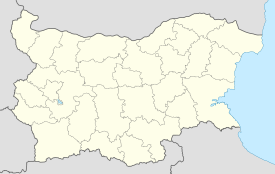Φιλιππούπολις | |
 | |
| Location | Plovdiv, Bulgaria |
|---|---|
| Region | Thrace |
| Coordinates | 42°08′36″N 24°44′56″E / 42.143333°N 24.748889°E |
| Type | Ancient Thracian, Greek and Roman Settlement |
| Area | Wall circuit: ca.78 ha (190 acres)[1] Occupied: 78 ha (190 acres)+ |
| History | |
| Founded | 4th century BC |
| Periods | Hellenistic Greece |
| Site notes | |
| Excavation dates | 1960–present |
| Website | Site |
| Part of a series on the ancient city of |
| Philippopolis |
|---|
 |
| Buildings and structures |
|
Religious Fortification Residential |
| Related topics |
Philippopolis (Ancient Greek: Φιλιππούπολις, Φιλιππόπολις) is one of the names of the ancient city (amongst which are Thracian Eumolpia/Pulpudeva, Roman Trimontium) situated where Plovdiv is today. The city became one of the largest and most important in the region and was called "the largest and most beautiful of all cities" by Lucian. During most of its recorded history, the city was known by the name Philippopolis (‹See Tfd›Greek: Φιλιππούπολις, translit. Philippoúpolis, lit. "Philip's city") after Philip II of Macedon. Philippopolis became part of the Roman empire and capital of the Roman province of Thracia. According to Ammianus Marcellinus, Philippopolis had a population of 100,000 in the Roman period.[2]
Philippopolis was in a fertile region on the banks of the Maritsa River (the ancient Hebrus). The city historically developed on seven syenite hills, some of which are 250 metres (820 feet) high, because of which Plovdiv is often referred to in Bulgaria as "The City of the Seven Hills".
- ^ [1] Марк Аврелий и Филипопол
- ^ Елена Кесякова; Александър Пижев; Стефан Шивачев; Недялка Петрова (1999). Книга за Пловдив (in Bulgarian). Пловдив: Издателство "Полиграф". pp. 47–48. ISBN 954-9529-27-4.
